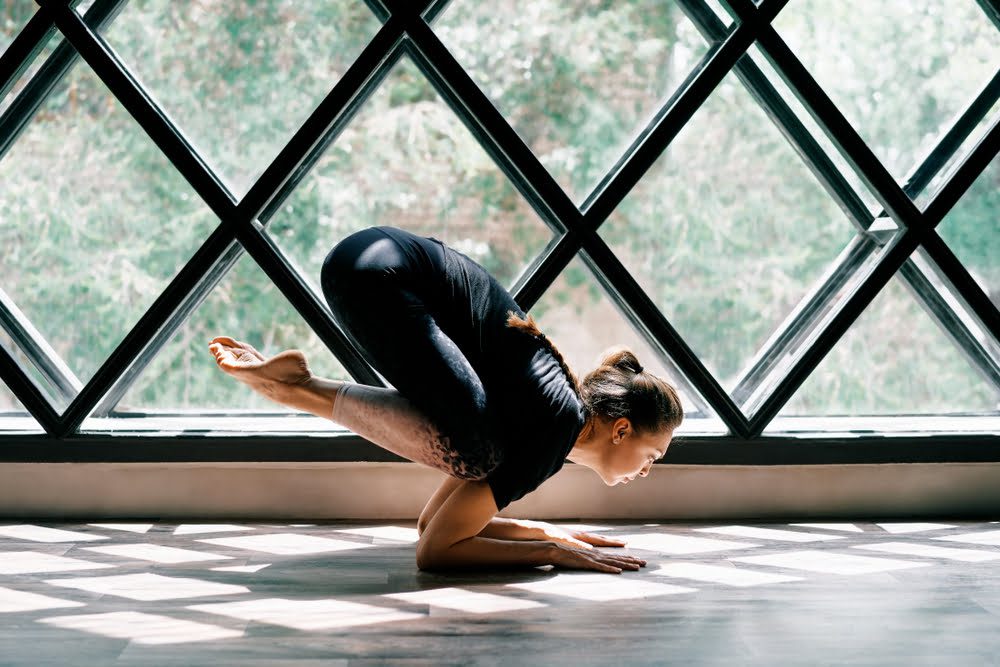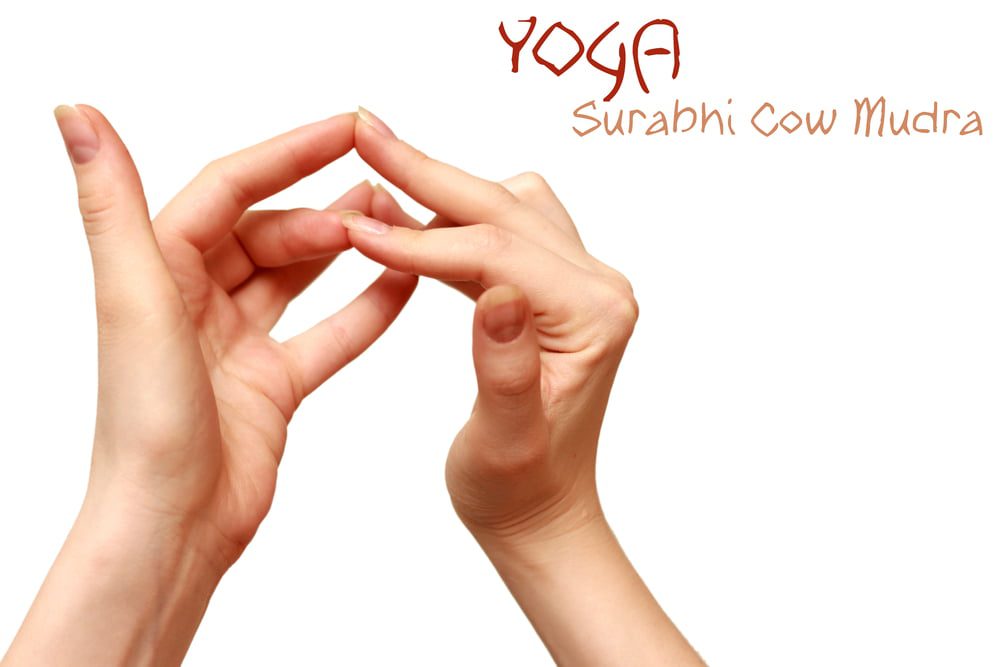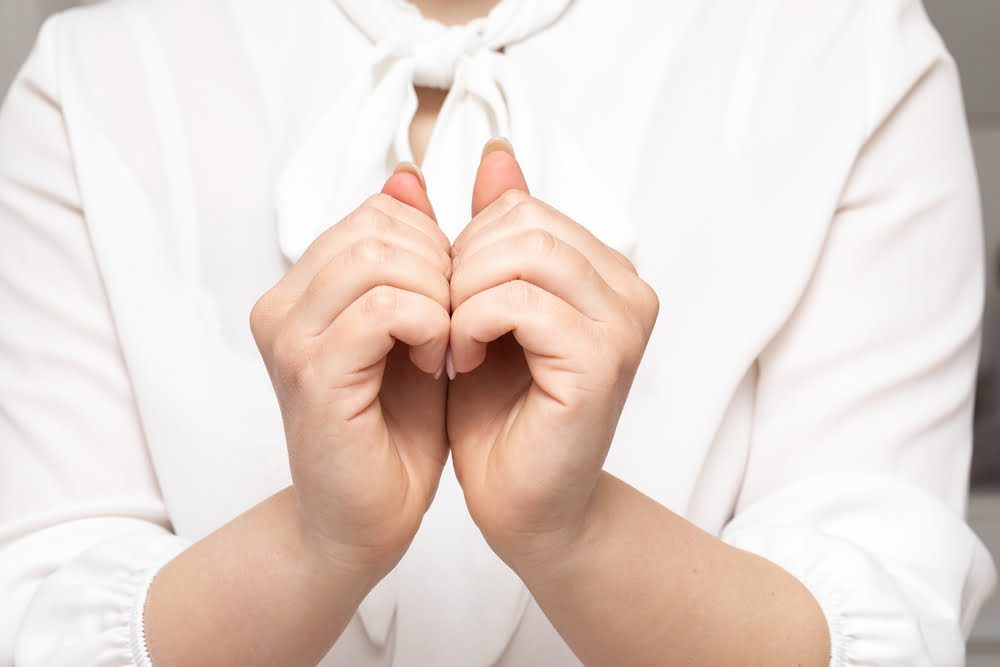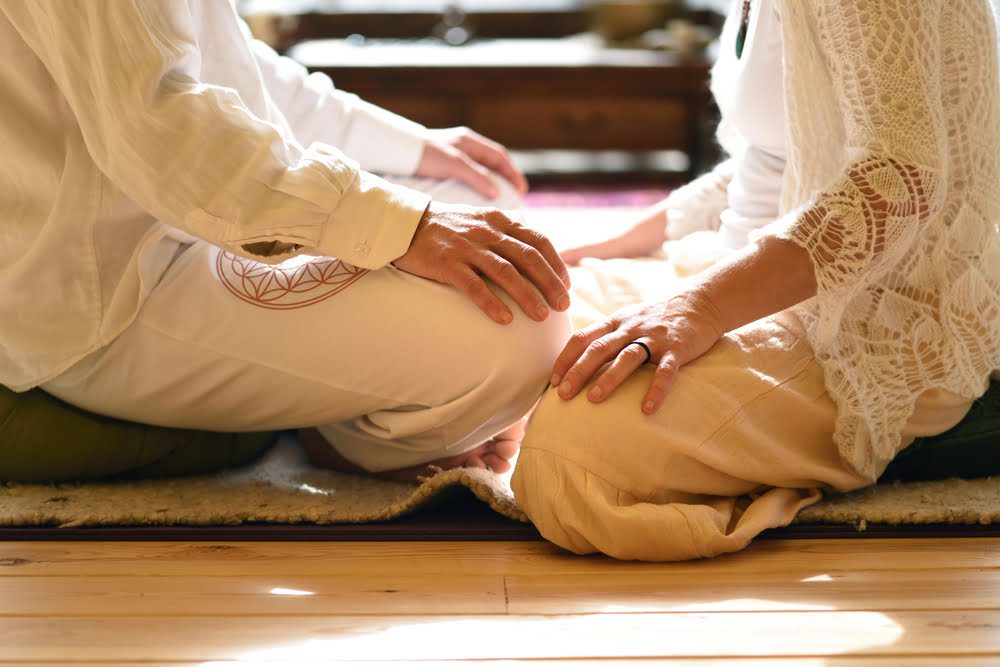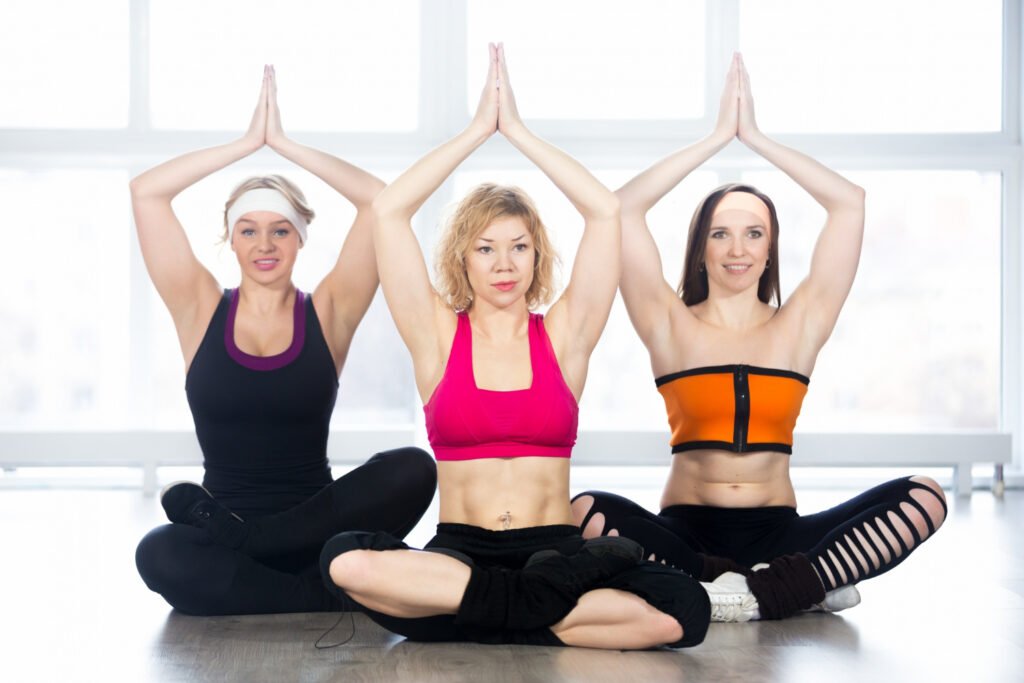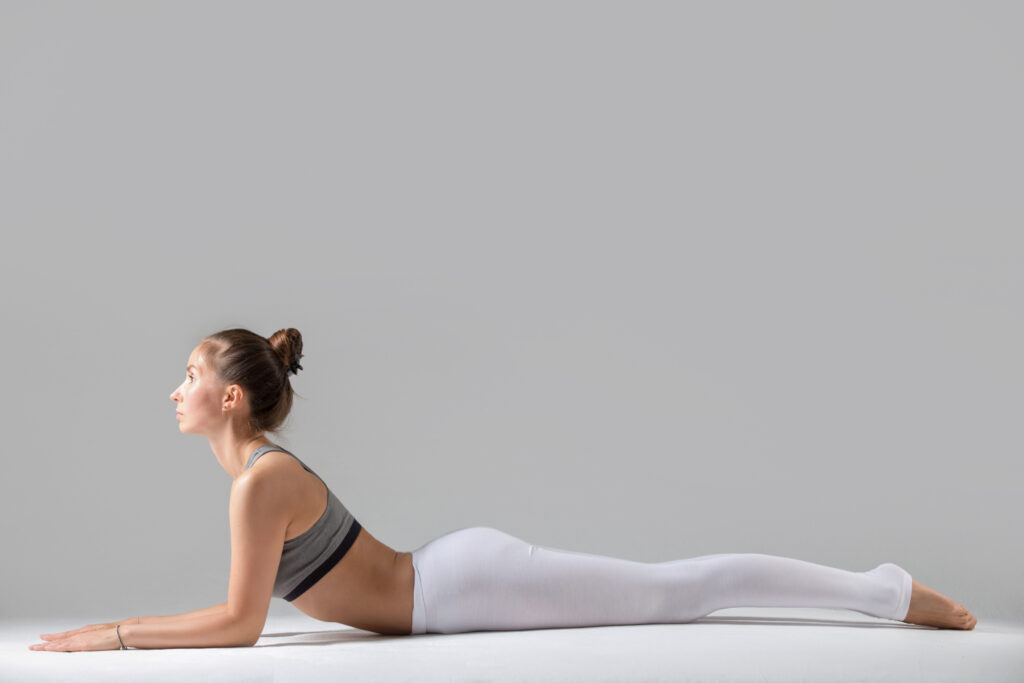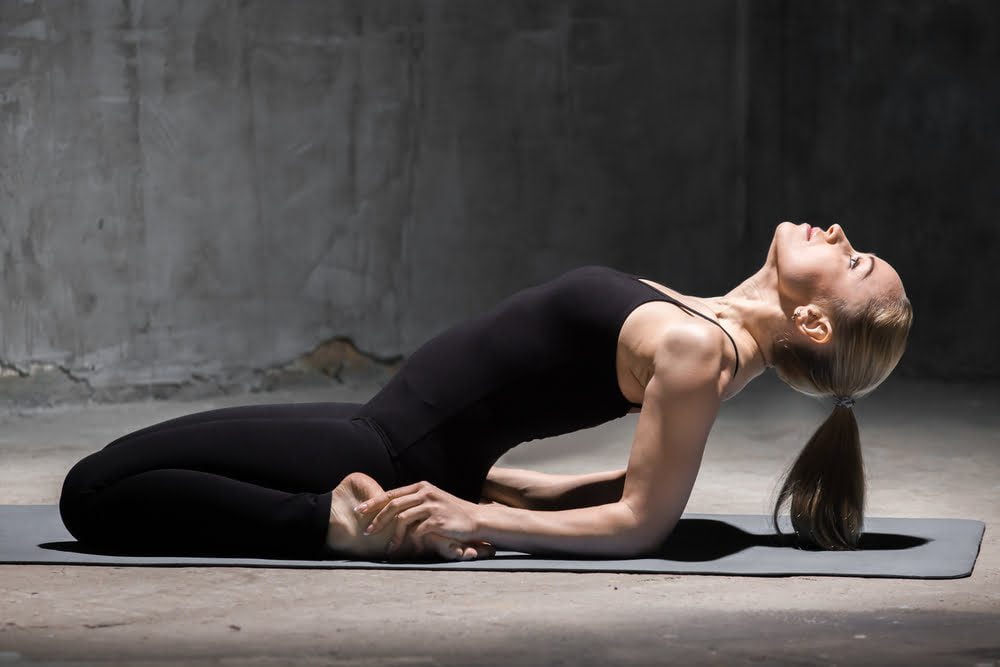Baby Crow Pose, also called Bakasana B is a transformation of the standard Crow Pose or Bakasana. In addition to being an energetic alternative, this variant of the pose is very engaging and easy to handle for novices and is also good for those who are working on their strength and balance in their yoga practice. The Baby Crow Pose has a host of health benefits for the body and mind, such as the following: toning the arms, wrists, and core muscles, owning balance and focus, and increasing body awareness in general. We go through the ins and outs of safely and effectively performing the Baby Crow Pose along with some necessary precautions to take to ensure safety without causing any unnecessary injuries.
Even if you are a greenhorn or a seasoned yoga practitioner incorporating Baby Crow Pose can infuse your practice with a more playful and joyous feel, thereby bringing out the best in your yoga journey.
Benefits of Baby Crow Pose.
Baby Crow Pose, also known as Baby Bakasana, is a modified version of the traditional Crow Pose in yoga. It offers numerous benefits for both the mind and body. Here are some of the key advantages of incorporating Baby Crow Pose into your yoga practice:
1. Core Strengthening.
The primary focus of the Baby Crow Pose is on the core muscles, especially the abdominals and obliques. As a result, you will be able to detect that your spine and abdomen have become stronger. You can maintain correct posture and keep your spine straight, which will help you avoid back pain.
2. Arm and Shoulder Strength.
This posture needs you to support the weight on your hands, which reinforce your arms, wrists, and shoulders. One of the broadly practiced types of poses, Baby Crow Pose can surely be responsible for making a person physically strong in the future. Other than that, it can also help in understanding the conditions in which you can hold it.
3. Balance and Coordination.
The use of Baby Crow Pose aimed at challenging your balance skills and coordinative abilities can be pointed out. The achievement of stability and control in this pose will allow you to develop your overall balance, the physical and mental aspect alike. All these can lead to better coordination in other everyday activities too.
4. Concentration and Focus.
When doing this delicate pose, you have to stay concentrated and focus on the work all the time. By allowing everything you have, both body and mind, to get the pose stable, it is possible to be always present for the experience. Your concentration can be improved by doing this pose regularly, resulting in a high level of concentration and focus on other issues in your life as well.
5. Confidence Building.
Acquiring Baby Crow Pose can also enhance your confidence. It lets off a beacon of trust and success as you move forward cautiously in mastering the techniques and balancing the postures. The new self-belief that you possess through this efficient method can move far from the yoga mat.
6. Digestive Health.
The organs housed in the abdomen get a signal to get working, particularly the digestive system, through Baby Crow Pose. The latter of the two actions in this posture is what initiates the same process to improve the conditions of the intestinal tract. This will lead to regular bowel movement and also, both eating and digestion can be carried out without any issues arising.
7. Stress Relief.
Similar to a lot of yoga postures, Baby Crow Pose has the ability to relax the body and mind, and let go of the day’s stress and anxiety. The sort of concentration, which comes from stable equilibrium, graced with deep breathing enables the mind to have a time-off from the tension generating there and thus release the stress. In following this relaxation at home, it is a real emotionally powerful stress management device regularly and successfully used.
| 💡 Tips FitMeMore.com Adopting Baby Crow Pose into your yoga routine helps to attain a better physical, mental, and emotional state. It is very important to approach this pose with the right attitude and practice it under the supervision of a highly experienced and certified yoga teacher to be safe from getting into the state of being easily hurt. |
How To Do Baby Crow Pose?
If you are just starting with arm balances or possibly would like to get really good at your Baby Crow Pose, then try to excel with this guide, which will definitely help you:
1. Warm-up.
Before you take on the pose involving arms balance, you need to be fully prepared by doing some warm-up exercises. To stimulate the flow of energy within, make a start with Sun Salutation rounds or pleasurable exercises that let your muscles move freely, at the core, shoulders, and also wrists. The purpose is to be able to make the muscles and joints active.
2. Start in a squat position.
Go into a squat and make sure your feet are hip-width apart. Keep your knees a little bit wider than your hips and with the hands placed on the mat, make sure the width of the shoulders and the fingers are spread out well.
3. Engage your core.
One of the most important aspects to have a good one-balanced core practice is to engage the core. Strengthen your abs, and you will improve your balance as they are essential. Maybe not so comprehensive in the explanation, but it creates a solid base for the arms and the upper part of the body if and only if true and effective efforts are immediately made by everyone for the necessary.
4. Lift your hips.
Loosen your chest and contract your abdomen in an attempt to lift your hips while still giving support to your hands and arms. During this movement of your hips, you can maintain a slight elbow bend allowing your legs to press against your upper arm (triceps). Now your body is already positioned for the Baby Crow Pose.
5. Find your balance.
Position yourself for balance by moving the whole body weight from feet to hands and then back. This, as well as paying attention to a fixed point in front of you, will let you get familiar with the pose in terms of alignment and balance.
6. Lift one foot at a time.
Once you’re balanced in the initial pose, the exercise of transferring your weight onto your arms and of lifting one foot off the ground instantaneously without the other can be initiated. Steady peripheral vision should facilitate good entertainment while making complementarily rhythmical movements to give out a balanced posture.
7. Gradually lift both feet.
After you feel confident taking one foot up and down at a time, try to make an effort to make both feet go up. Don’t forget to hold your center of gravity and breathe consistently during this practice.
8. Find your edge.
Making more progress, remember that your goal is also to make changes in how your upper body is aligned by taking steps towards straightening your arms and lifting those hips you are supporting higher. This way strength and mobility will be the key and patience will be your helper and supporter to allow you to get the right position without tension.
9. Stay mindful.
Remember that to perform Baby Crow Pose, you will need to become more focused and focused. So, pay attention to your emotions and physical responses at that moment and let yourself connect to them as much as possible. In case of any feeling of discomfort, make sure you are safe by allowing yourself to do something challenging occasionally. Stop when it is an emergency.
10. Practice regularly.
Consistency is the way to go if you want to master Baby Crow Pose. Insert it into your regular yoga practice and before you even realize it, you will become stronger, more balanced, and brimming with overall confidence in arm balancing poses.
| 💡 Tips FitMeMore.com Baby Crow Pose is just like any other yoga pose; it is a matter of time and a lot of practice to ace it. Make the journey enjoyable, be kind to yourself, and, the most essential step, enjoy practicing where your potential will lead you! |
Who Can Do Baby Crow Pose?
People with a firm foundation in yoga and adequate upper body strength, specifically in the arms, are the most suitable for doing this pose. However, it is also good to note that every individual’s path to yoga is distinct and adjustments to the pose can always be made to suit one’s capability. So, for a new yoga person or the one who has enough experience of it, with the proper amount of patience and determination, you can easily do the baby crow’s pose comfortably.
Who Should Avoid Baby Crow Pose?
Baby Crow Pose is not recommended for those who have such problems as hand, shoulder, or elbow injuries, as it may lead to worse consequences during the practice. Moreover, the people with problems such as high blood pressure, glaucoma, or even heart conditions are not encouraged to practise this pose due to the hazardous nature of the inversion and the pressure it can exert on the cardiovascular system and eyes. It is advisable to get advice from a professional yoga teacher or a medical expert prior to practising Baby Crow Pose in order to make sure that it is not harmful and that it suits one’s individual situation.
Precautions To Take While Doing Baby Crow Pose.
- Ensure that you have a strong and stable foundation by placing your hands firmly on the ground.
- Do not force the pose if you feel any pain or discomfort. Listen to your body and stop if necessary.
- Engage your core muscles to provide stability and support to your body.
- Start with a modified version of the pose by keeping your feet on the ground until you gain enough strength and balance.
- Use a yoga mat or a soft surface to cushion any falls or landings. Warm up properly before attempting the baby crow pose to avoid muscle strains or injuries.
- Take it slow and gradually build up your strength and flexibility before attempting more advanced variations.
- Practice near a wall or with a spotter to prevent falls and provide additional support.
- Focus on your breath and maintain a calm and relaxed state of mind throughout the practice.
Bottom Line.
Baby Crow Pose is a challenging yet rewarding yoga pose that can help improve balance, strength, and flexibility. It offers a modified variation of Crow Pose that is accessible for beginners or those with limited upper body strength. By engaging the core, activating the arms and shoulders, and finding stability in the foundation, practitioners can gradually progress towards mastering the full expression of Crow Pose. With consistent practice and proper alignment, Baby Crow Pose can be a stepping stone towards advancing one’s yoga practice and achieving more advanced arm balances. So, whether you are a beginner or an experienced yogi looking to refine your skills, incorporating Baby Crow Pose into your practice can bring both physical and mental benefits, leaving you feeling stronger, more centered, and more connected to your body.
How we reviewed this article:
Our team of experts is always monitoring the health and wellness field, ensuring that our articles are updated promptly as new information emerges. See Our Editorial Process
Jun 29, 2025
Written By: Sarah Waskevich
Reviewed By: Gail Cooper
Written By: Sarah Waskevich
Reviewed By: Gail Cooper

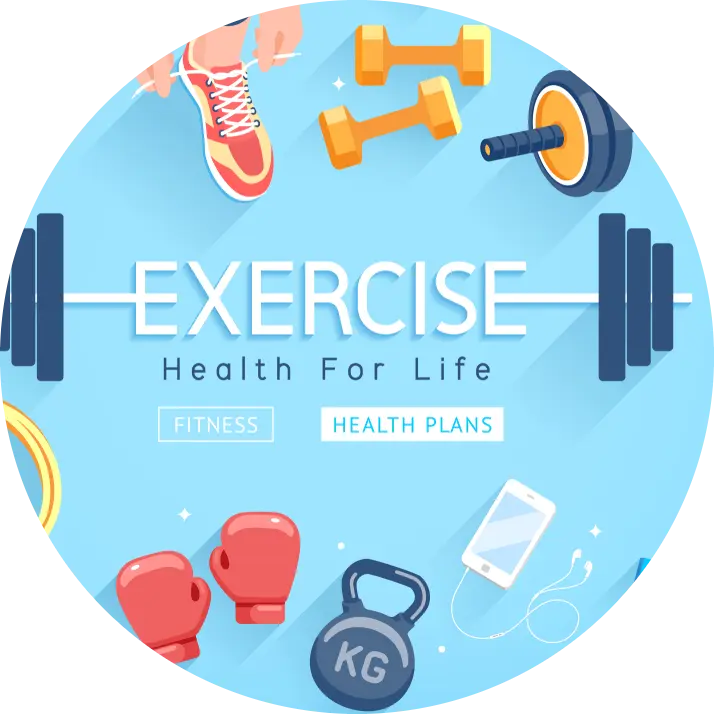 Workout
Workout
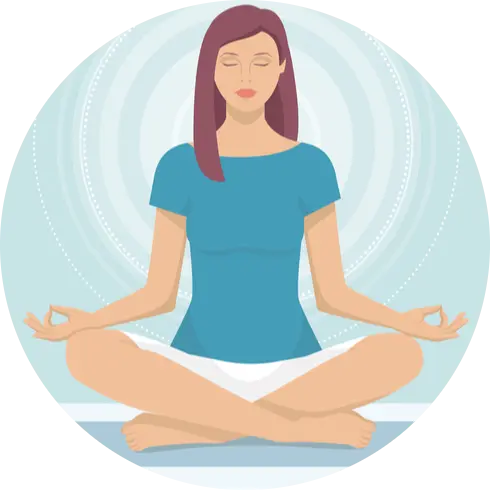 Meditation
Meditation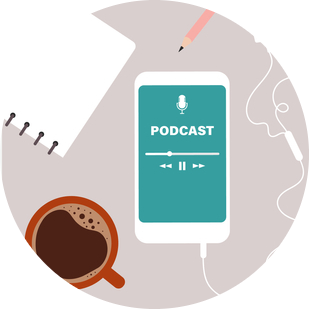





 Contact Us
Contact Us

